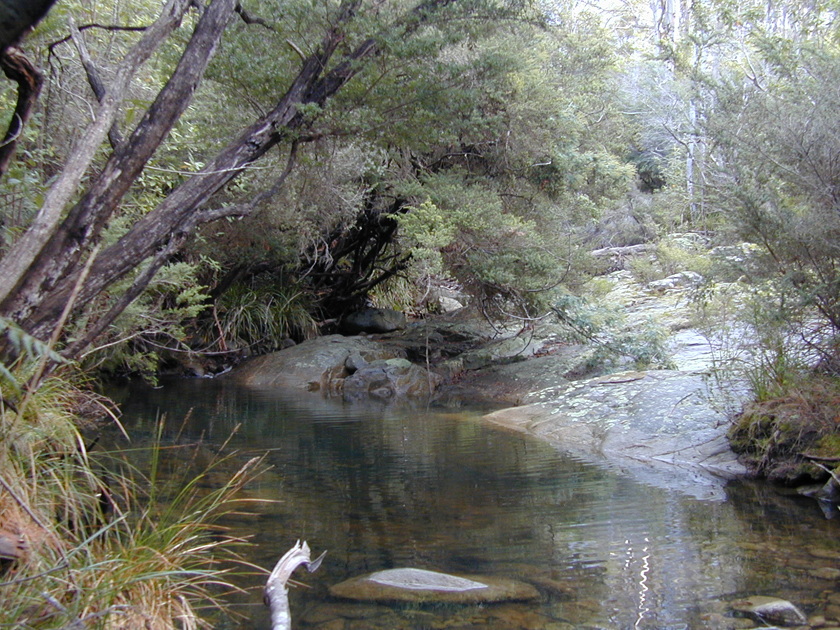Ironhouse Point Protected Area
In 2011 a conservation covenant was registered on private land at Ironhouse Point, through the Protected Areas on Private Land program. The property is situated at the base of Mt Elephant and provides protection for two species of threatened fern that have an extremely restricted distribution in Tasmania.
The coastal foothills of Mt Elephant in northeast Tasmania provide a significant refuge location for conservation of threatened ferns. In late summer, the steep coastal terrain is sometimes subject to short periods of extremely heavy rainfall that results in frequent and intense flash flooding of coastal streams (Garrett 1993). This has excised deep gullies where damp and shaded conditions exist in an otherwise dry, fire-prone landscape and provide a haven for rare and unusual species, as in the image below - riparian forest, Old Billy Creek.
A population of prickly rasp fern (Doodia aspera) was discovered during the covenant survey by a TLC conservation officer. This is a highly significant find, as the species had not previously been recorded in Tasmania. The population is confined to the riparian forest understorey in a narrow band along Old Billy Creek that is subject to frequent disturbance from flash flooding and also less frequently by wildfire.
The Ironhouse Point protected area also supports a population of the threatened fern Blechnum cartilagineum. This species is only recorded in four geographically isolated locations in northern and eastern Tasmania.
The private landholder, Greg Unwin is a lecturer in Forest Ecosystems and in Wilderness Management at UTAS School of Geography and Environmental Studies in Launceston. His original proposal for the protected area was based on the site’s original stand of blue gum forest and its observed value for swift parrot and sea eagle habitat. “I have always considered Old Billy Creek to be a special place for native ferns as well,” Greg said. “So I was extremely gratified when Matt Taylor of TLC identified Doodia aspera on site and advised me of these two important records as a result of his covenant appraisal. This simply added the cream to the biodiversity cake which is now protected and managed by the covenant agreement.
The regeneration of this forest site since widespread defoliation by the Scamander / Four Mile Creek fires has been prolific. Both the Doodia and Blechnum ferns and many other plant species, including young blue gum seedlings, have flourished in the wake of extensive canopy and understorey disturbance as a result of the fire.”


